
Lord Flycatcher
August 20th, 2013
Eastern Kingbirds are so named for their bossy disposition: they defend their nesting areas fiercely, chasing and attacking crows, hawks, and even large herons. Kingbirds have been photographed appearing to ride the backs of hawks while pecking at them. I think this one has an appropriately regal air about him.
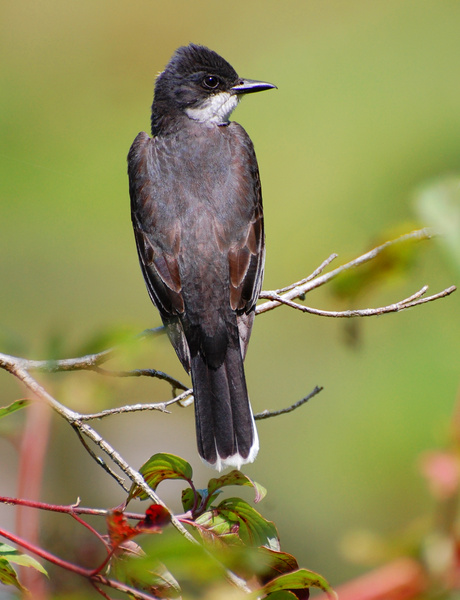
A New Dragonfly In Ottawa
August 17th, 2013
This is another of the various species of birds and insects that have been expanding their range north into our area. Prior to 2010, no Blue Dasher had ever been seen in Ottawa. In 2010 there was one. In 2011 there were lots more, and in summer 2012 Chris Lewis called them "uncountable" at Mud Lake and Petrie Island. It's hard to believe how quickly what was a vanishly rare dragonfly has become commonplace. I photographed this one from the west platform at Mud Lake.
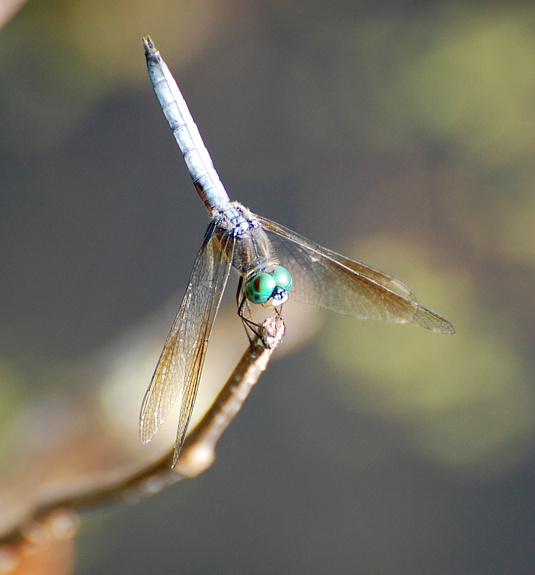
1680x1050 wallpaper
I love what the early morning light did for this picture.
Bronze Copper
August 13th, 2013
It's been a bad year for butterfly watching, so I was excited to find this fellow at the west end of Andrew Haydon Park. Bronze Coppers like wet, marshy areas. A stand of Flowering Rush (a flower that grows up out of the water, often alongside cattails) was the ideal place to find one.
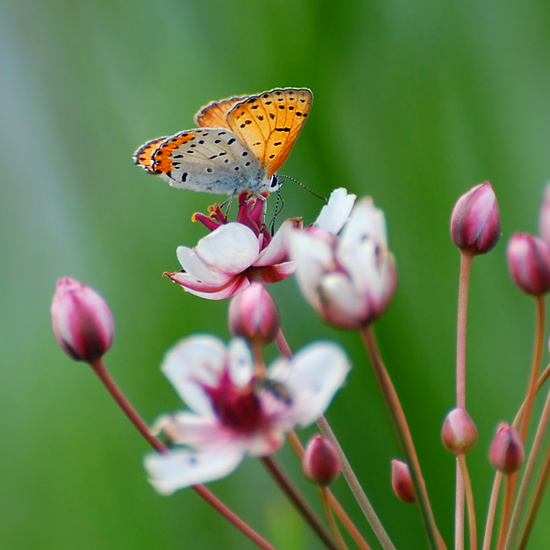
1680x1050 wallpaper
Long-Leaved Speedwell
August 10th, 2013
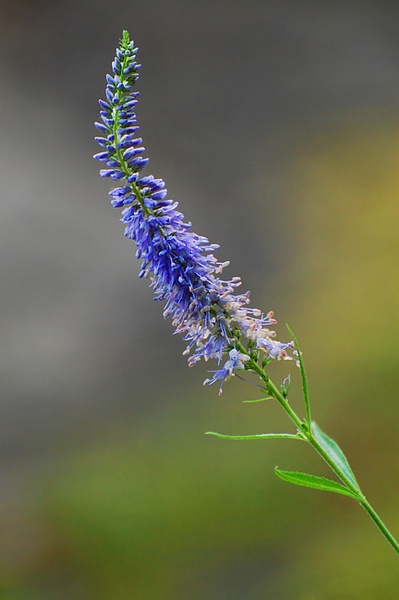
A morning at Bill Mason Centre (part 3)
August 1st, 2013
I also found Halloween Pennant at the Bill Mason pond--a very pleasant surprise. It's another uncommon one, found mainly south of here, and I was expecting to have to go further afield to get it. But actually I've seen quite a few more since then at several locations, so the online checklist that designates it as "scarce" may be out of date. Climate change seems to be coaxing a number of formerly more southern species into our area, and I'm noticing it this year more than ever before. Egrets, Deer Ticks, Halloween Pennants, you name it!
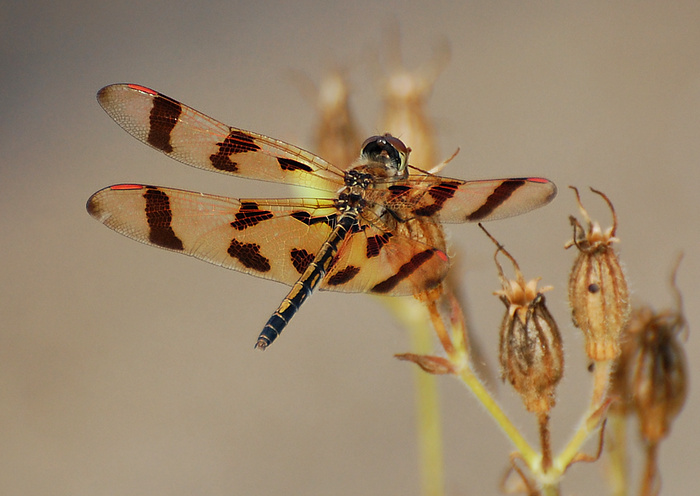
To annoy the 5'3" nature photographer, pick a six-foot-tall Great Mullein for your perch.

Teneral (newly emerged) damselflies were all over the pond shore, so young that they didn't even have their colors yet. In the picture below, you can just see what I think is a discarded larval skin curled over the flowers. The second picture has a better view of a larval skin.
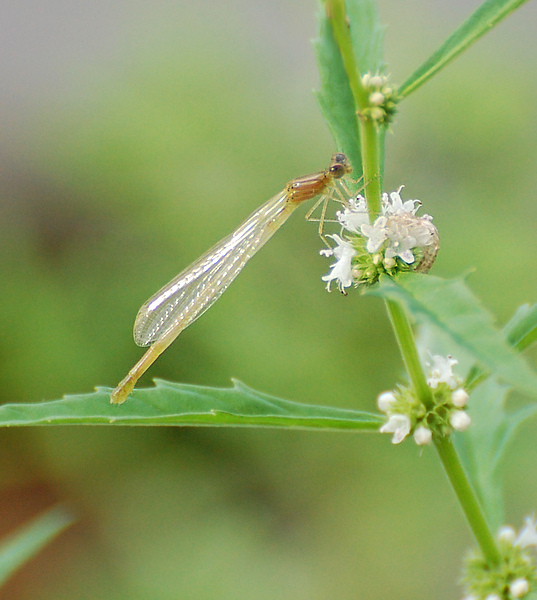

Odonates spend their larval days creeping underwater, hunting other aquatic insects, worms, and even baby fish. If you have a strong stomach (frankly, it helps if you have an outright affinity for horror movies), check out this Youtube video. I know I'll never look at damselflies the same way again!
A morning at Bill Mason Centre (part 2)
July 30th, 2013
This post contains the reason why I went to Bill Mason Centre.
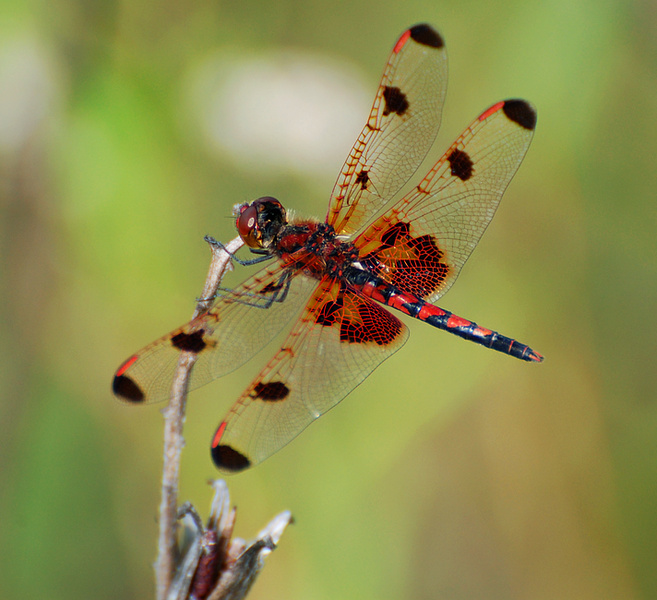
1680x1050 wallpaper
Just look at that. Have you ever seen a dragonfly more splendid? I hadn't. When I told Gillian that I was eager to see my first Calico Pennant, she suggested the "sandy pond" at Bill Mason Centre as a place to look for them. I'd never been to that part of BMC before--didn't even realize there was a sizable pond in the vicinity--but with a little exploration of side trails I managed to find it. Then I pored over the weedy vegetation on the shoreline looking for interesting odes. Found my Calico Pennants and quite a bit more besides!
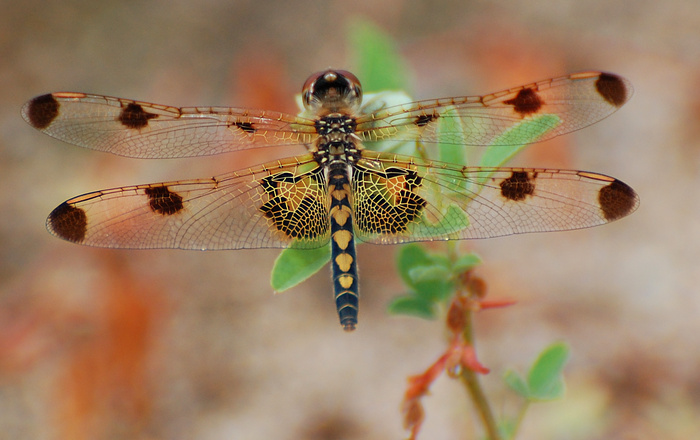
1680x1050 wallpaper
The female Calico Pennant has her own beauty that rivals his. View at high res to appreciate how her wing patches are like luminous stained glass.

1680x1050 wallpaper
This spreadwing damselfly--Amber-Winged Spreadwing, I think--also modelled nicely for me. The bluish-white powder on his thorax and the tip of his abdomen is called "pruinosity." Some male odonates develop it as they mature. The pruinosity reflects ultraviolet light, which means that to insect eyes (and bird eyes), it must look even more striking than it does to us.
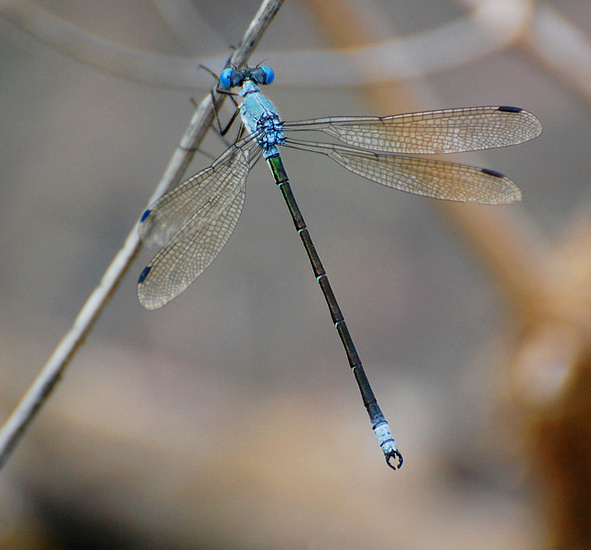
1680x1050 wallpaper
(Continued in next post...)
A morning at Bill Mason Centre (part 1)
July 29th, 2013
I had a wonderful morning at Bill Mason Centre last week, and got enough good photos to make three posts out of it.
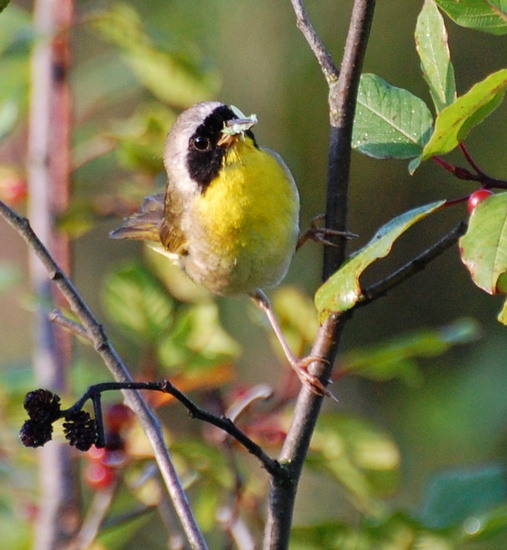
This Common Yellowthroat obviously meant to feed his young, but was unwilling to go to his nest while I was watching. Instead he hopped from perch to perch, watching and scolding me while holding the insect in his mouth. In the wallpaper version, you get a good view of the lush bushy vegetation that characterizes this wetland. The crop shows three of the alder catkins which look like mini pine cones.
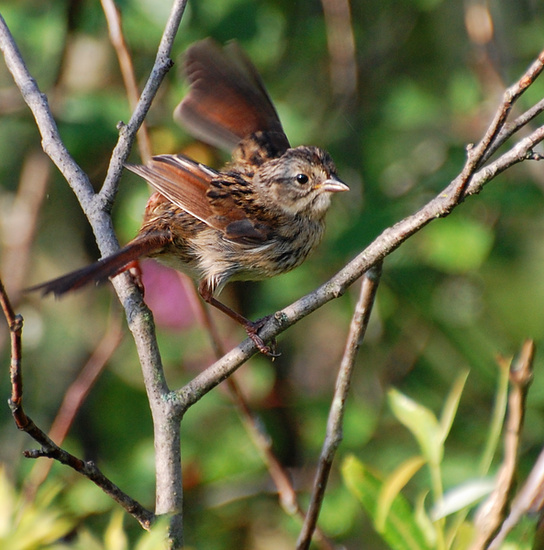
Lots of fledgling Swamp Sparrows were about, still streak-breasted in their youth.
I gather the boardwalk at Bill Mason Centre is not so much maintained in summer, when the schoolkids aren't around to use it. Because eventually I came to this:
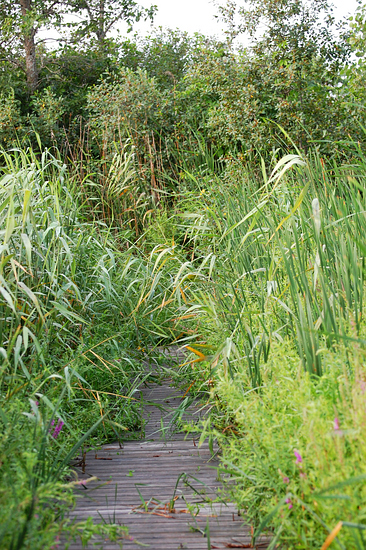
Whereat I made the mistake of attempting to push through the huge overhanging reeds. I gave up and turned back halfway, and once I was out, found myself covered head to toe with hundreds of little bits of greenish debris. I didn't mind it so much until I noticed that the hundreds of little greenish bits were moving. Because I was in fact covered head to toe in aphids.
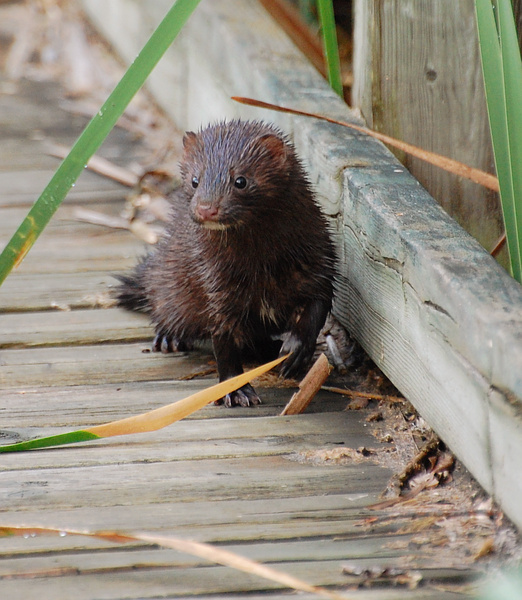
...but it was worth it to have seen this adorable mink scampering down the boardwalk!
(Continued in next post...)
Odes Outing
July 25th, 2013
Last weekend I joined quite a number of people for a dragonflies and damselflies outing at Mud Lake, led by Chris Lewis and Gillian Mastromatteo. It was lots of fun for all, and I particularly appreciated the opportunity to learn by observing how to net and handle odonates without harming them. Because some odes can only be identified by taking them in hand and using a magnifying glass, I will have to learn that skill if I want to get more serious about dragonhunting.
Dragonflies in hand make for interesting photos!

Lance-Tipped Darner. Is it just me or does he look like he's enjoying this?
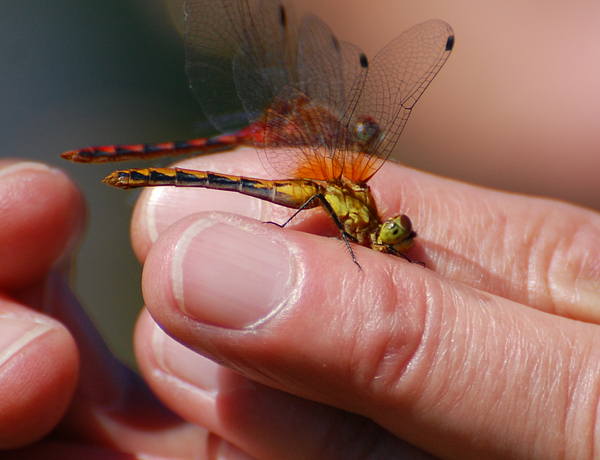
Male (behind) and female White-Faced Meadowhawks.
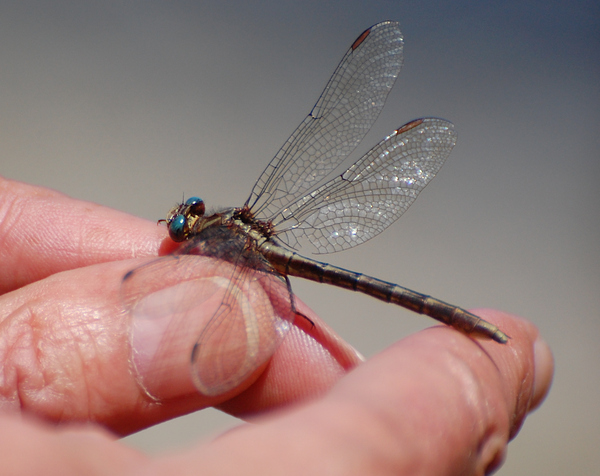
Lancet Clubtail.
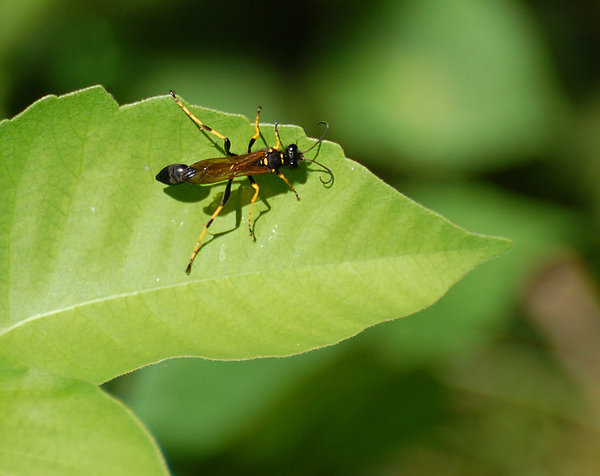
1680x1050 wallpaper
Black and Yellow Mud Dauber. Not a dragonfly, obviously, but I couldn't resist photographing these cute wasps, who seemed to be everywhere.
My First Dragonhunter
July 22nd, 2013
I've been eager to see one of these ever since I read about them on Gillian's blog. Last week at Sugarbush Trail, I finally got my wish!
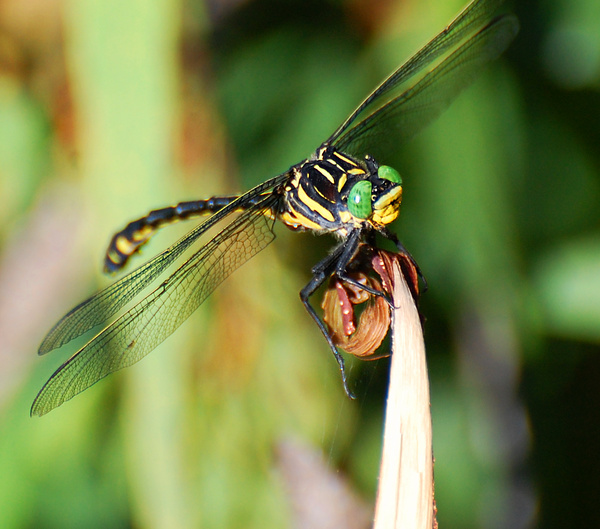
1680x1050 wallpaper
Dragonhunters are aptly named: large, powerful dragonflies that routinely eat other dragonflies and damselflies. (They'll even eat monarch butterflies, carefully eating around and discarding the bits with the highest concentration of toxins.) Given that this one was perched over Chelsea Creek right by the display grounds of the jewelwings, I have an idea of who was on the menu!
The Beauty Of Jewelwings
July 19th, 2013
It's settled: Ebony Jewelwings are my favorite insects of all. They look like butterflies in flight; but when they land, they look like no other insects you've ever seen. (Technically they're damselflies.) I love their vivid iridescent blue/green bodies, and their delicate black teardrop wings. Watching them feels almost like bird-watching. The males have their favorite perches, their showy displays, their courtship rituals. They chase each other as they vie for breeding rights, while the females perch demurely in groups, watching the show.
Jewelwings like clear, clean flowing water...not an easy thing to find in Ottawa. My favorite spot for watching them is Chelsea Creek in the Gatineau, along the Sugarbush Trail. It's a beautiful area and teeming with jewelwings in summer. At a bridge over the creek, territorial males haunt their chosen perches (usually overhanging blades of grass), returning, like avian flycatchers, to the same perch over and over after each sally over the water. This makes them easy to find!
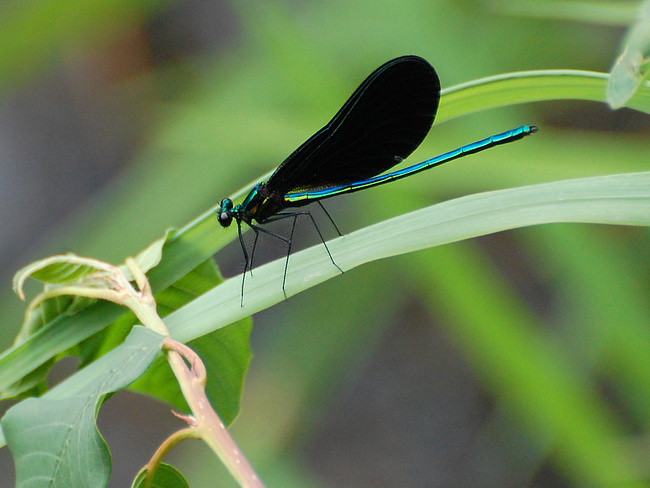
1680x1050 wallpaper
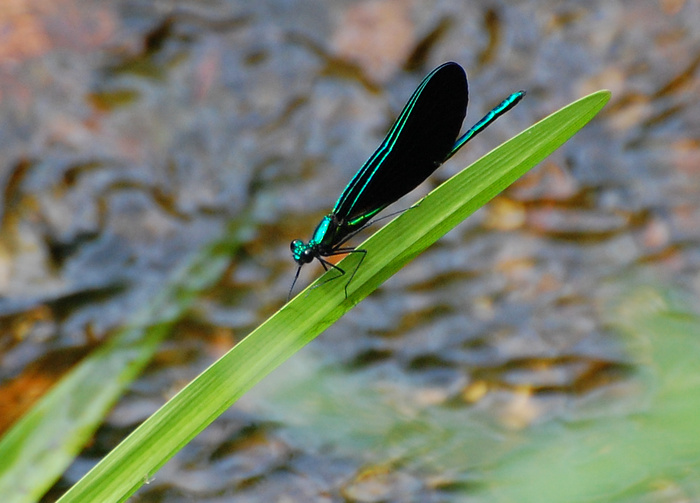
This next shot greatly benefits from viewing at high res. It's two females laying their eggs in the creek.
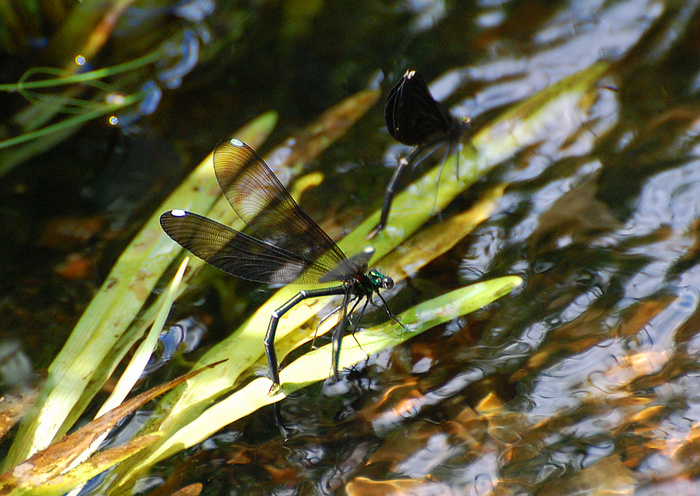
1680x1050 wallpaper

Finally, an odd action shot. A male flew by and seemed to grab at each ovipositing female in turn. Was he guarding them? Or was he trying to interrupt the process, because they weren't his eggs?
|
